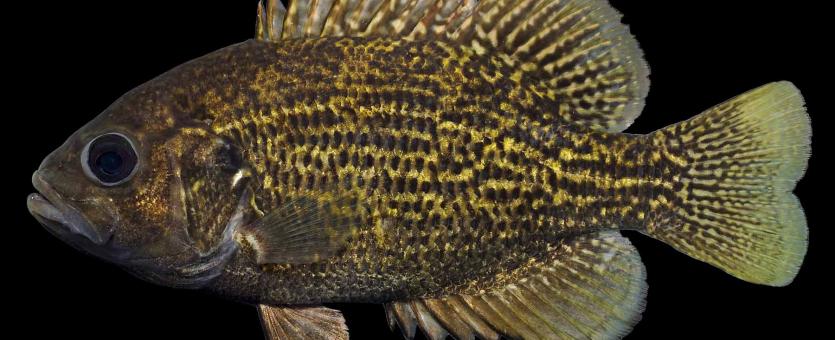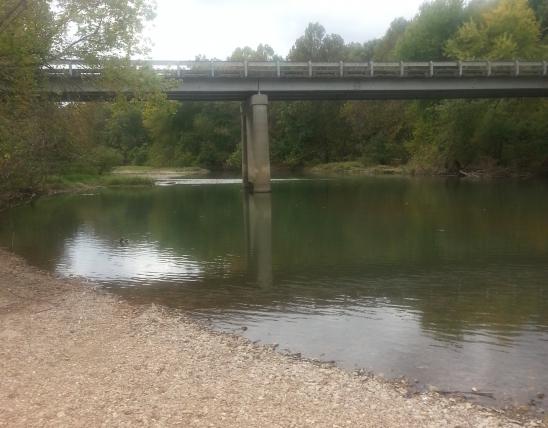
The northern rock bass, or goggle-eye, is thicker-bodied than most other sunfish, with a large mouth and very large eyes. The spiny dorsal fin has 12 spines broadly connected to the soft dorsal fin. The anal fin has 6 spines. The color is variable, but it is generally dark brown to bronze above, often blotched on the sides. There is a distinct pattern of dark spots arranged in parallel lines along the sides; this differentiates the northern rock bass from its closest relatives, the Ozark bass and shadow bass.
Total length: to 11 inches; weight: to 1 pound; maximum about 17 inches and 2 pounds, 12 ounces.

Occurs in the northern and southwestern Ozarks.
Habitat and Conservation
Streams of the northern Ozarks, tributaries of the middle Mississippi, and a portion of the southwestern Ozarks. Rarely in Ozark reservoirs. Larger individuals are found around boulders, logs, and vegetation beds in deep pools. Most active twilight hours of dawn and dusk, and at night.
Food
Crayfish and aquatic insects; occasionally terrestrial insects and small fish.
Status
This game fish was previously recognized as a single species known as “rock bass,” but two very close relatives of the northern rock bass have been recognized in Missouri. Although nearly identical in behavior, habitat, and life histories, the shadow bass (Ambloplites ariommus) and Ozark bass (Ambloplites constellatus) differ from northern rock bass and from each other primarily by where they are found.
Life Cycle
Rock bass spawn from the first week in April to as late as early June. Males of this solitary-nesting species build saucer-shaped nests. In Ozark streams, the timing coincides with that of the smallmouth bass. Individuals can live 7 to 9 years.



























